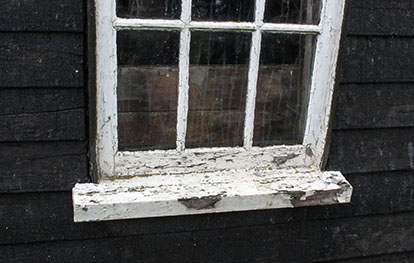
The outside of a Stone Floor window.
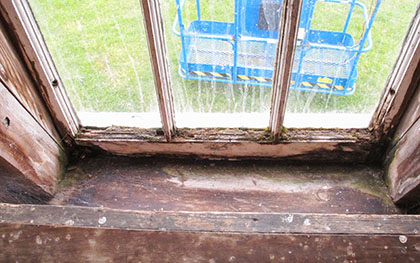
The inside of a Stone Floor window, looking damp.
By 2015, it was 6 years since the sails had been painted, and 7 years since the Smock and Cap were done. It is always difficult to know whether to paint the black first and then splash it with white paint, or paint the white first, and then splash it with black paint. We decided to try the other way around from last time, and do the white first. This was partly because we knew that most of the windows needed some serious repairs, or possibly completely replacing.
So on the 18th May we started work on the windows, to assess what needed to be done. Geoff had painted the windows over the years since they were fitted, but being awkward to get to, they had not received the regular attention that they really need.

The outside of a Stone Floor window.

The inside of a Stone Floor window, looking damp.
The windmill has 2 windows on each floor, so 8 in total. The basement ones had been made at the time the mill was restored, and were in good condition. However the 6 others had been purchased by Christopher Wallis in the 1970s but they were far from new then, having previously served another life somewhere else for many years. Geoff repaired one in the 1990s, but we knew that the other five needed significant work, and needed to be removed for proper assesment and treatment.
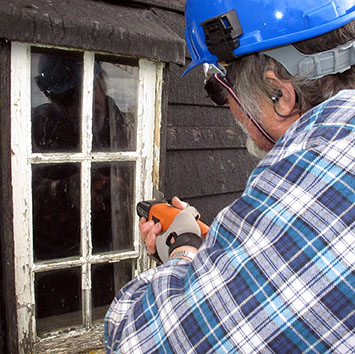
Cutting out one of the smaller windows from the top or Dust Floor.
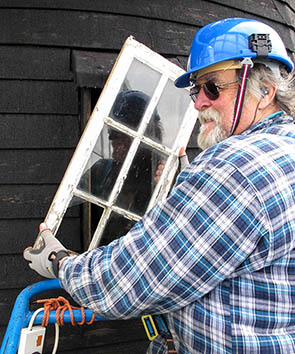
Removing the window.
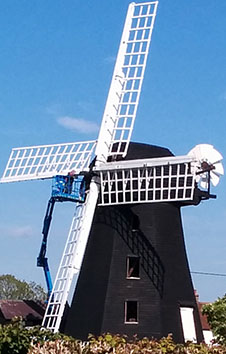
Windmill without windows.
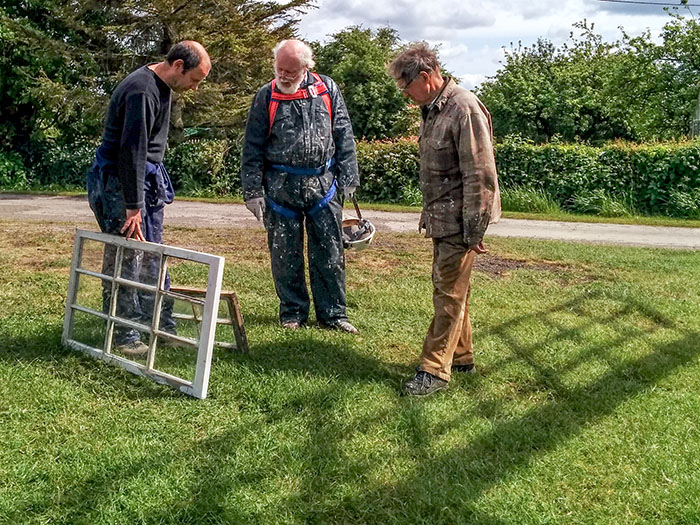
Naturally, contemplation and discussion in the shadow of the windmill is an essential part of any decision making.
We concluded that all the window frames could be saved although two needed some timbers replacing, which our millwrights did for us. Luckily a couple of our volunteers were prepared to take the others away and give them some TLC, in one case re-glazing them on their kitchen table. A couple of the windows needed timbers completely replacing, and our millwrights tackled those for us.
A worse problem was that the deterioration of the window frames meant that water had been resting on the sills below them, and rot was setting into some of the sills. This was worse than we had imagined, and a problem because the sills are part of the framework of each wall and could never be replaced without major reconstruction of the walls. Therefore the only option was to cut out the rotten wood and fill them with modern wood repair techniques. An example of the results achieved can be seen below. Fortunately we were kindly donated some materials for the purpose by REPAIR CARE (this external link is set to open in a new window or tab)
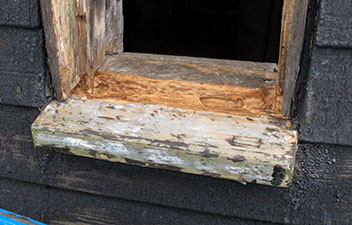
A small window sill with the rotten wood cut out ready for filling.
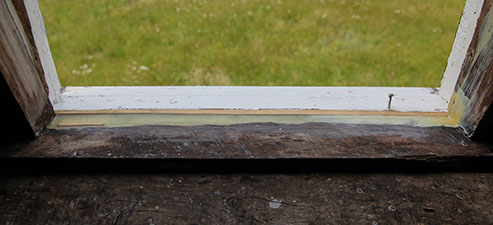
A larger window sill filled with the resin material, of which a lot was needed.
Our priority was to get the small windows for the top floor completed first, so we could fit therm back whilst we still had a cherry-picker on site for the painting of the sails. The other three windows had to wait a bit longer, and they were not all back until September. However the openings were blocked up with translucent plastic sheet, which still allowed some light indide for visitors.

Two blocked windows.
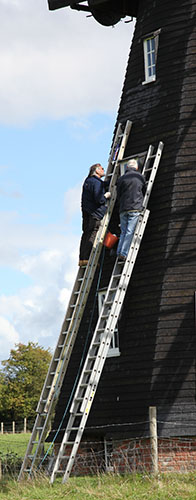
The last window frame is returned.
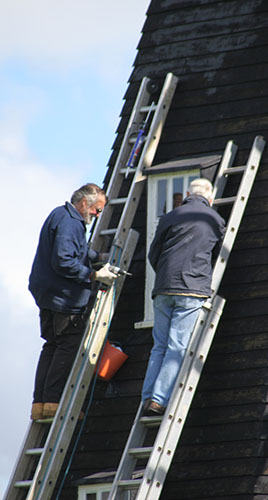
Securing the last window frame.
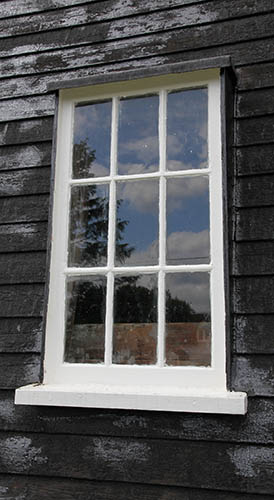
A completed window.
The sails had not been painted since 2009, and were looking in need, certainly from close too anyway. Annoyingly from a distance they still looked brilliantly white. It is the back of the sails that really looks the worst, and tend to get rather green as they never get washed by driven rain, which will always fall on the front of the sails. It is not until you are up on the sails that you can really appreciate the size of them, and their precise geometry. We had to give them a good clean first, but when painting them, it is always difficult trying to remember which sides of which bars have been done as one works along or across a sail.
Obviously we also painted the refurbished windows, but also done were all the doors and the other piece of white woodwork, the fantail. To try and avoid getting too much paintwork on the smock, or body of the windmill, I had the idea of covering up a couple of the walls that we were working in front of. It was not easy fixing up such a large tarpaulin, but it did stay on the mill for about four days, until the wind got the better of it one night. The wind also nearly got the better of myself, John and Laura the following morning when we tried to tie it back on.
Below are a few photos of the painting work in progress.



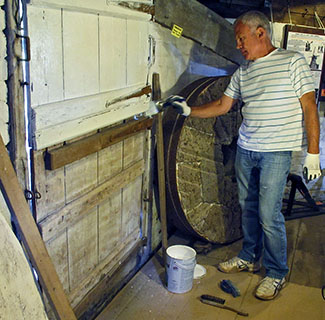
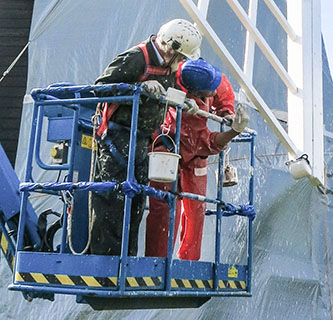
Around 14 volunteers helped us with all the work above, giving us various amounts of their time. We are extrememly grateful to them for all their help, without which we would not have been able to carry out what must have been the most important and concentrated spell of work on the windmill in the last 30 years. We are also extremely grateful to the supplier of the Solignum Architectural White Woodstain that we use for the sails and other items: AMERSHAM DECORATING SUPPLIES (amershamdec.co.uk) (this external link is set to open in a new window or tab)
This page ( painting-2015.php ) was last updated on 24 February 2018.
The Chiltern Society is a Registered Charity No 1085163 and a Company Limited by Guarantee Registered in England and Wales Registration No 4138448.